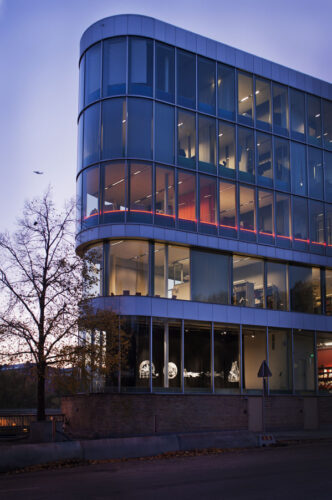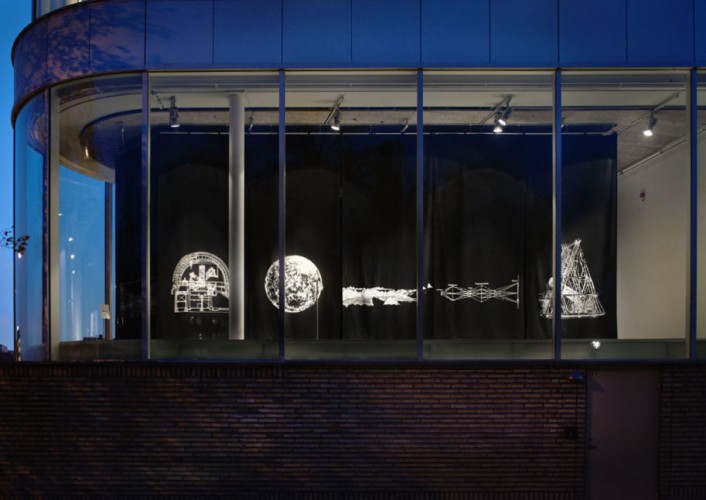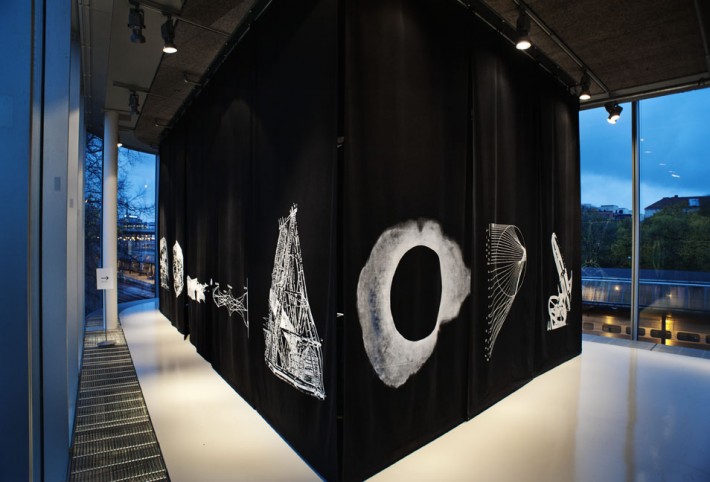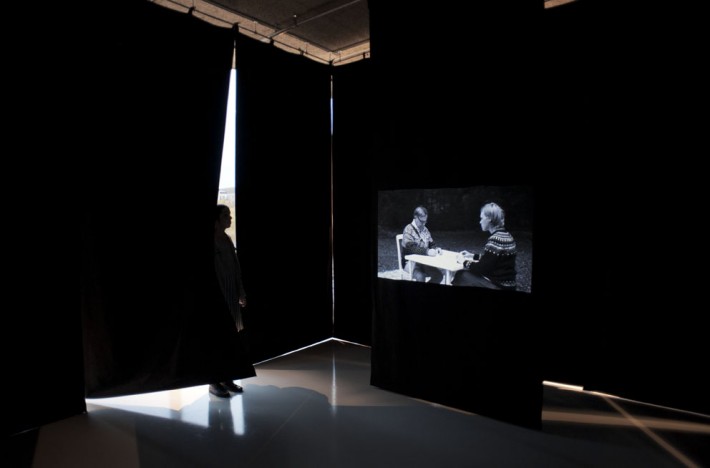Installation: Stereoscopic Scenography, 2011
2011, installation of 15 painted draperies, 150 x 340 cm, site-specifically produced for Spetsen, Bonniers Konsthall, Stockholm
15 motifs based on illustrations from astro-physical books, white textile paint on black cotton fabric

Photographer: Johan Wahlgren
Stereoscopic scenography is a site-specific work, consisting of fifteen hand-painted curtains, hanging side by side from a rail in the ceiling. This structure imitates the shape of the room (an ‘iron’) in a smaller, darkened room. The motifs are interpretations of illustrations in astrophysical and scientific handbooks, inverted from black to white and painted in larger sizes on fabric. The images testify to moments in history when humans, through physical discoveries and technological advances, have expanded their vision and knowledge of the universe.
For this installation, I wanted to explore the characteristics of the Spetsen room, as a stage where different movements and positions are possible for the viewer, but also as a greenhouse or observatory where we are both isolated and in contact with the outside world. The format of the fifteen curtains enters into a dialogue with the seventeen glass sections of the façade, while forming a darkened ‘cinema’ in the centre of the room. Inside the cinema, visual artist Ulla von Brandenburg’s film Chorspiel (2010) was screened. Visitors could pass between all the curtains to reach the centre of the installation. The work was commissioned for Bonniers Konsthall’s fifth anniversary as a duo exhibition, curated by Camilla Larsson.

Press, texts and links:
Platser Samlingar Namn: Att förlänga blicken (SE) Camilla Larsson 13.06.15
Artforum International: Ulla von Brandenburg/Malin Pettersson Öberg (EN) Nina Möntmann 12.02.01
Frieze Magazine’s blog: Best of 2011 (EN) Jochen Volz 11.12.24
Kulturtidskriften FLM: Flerstämmigt (SE) Cecilia Björk 11.10.08
Nummer.se: Körspel med utåtriktad scenografi (SE) Thomas Olsson 11.09.30
Dalarnas Tidningar: Falukonstnär skapar mjuka rum i Spetsen (SE) Cecilia Ekebjär 11.09.29
Dala Demokraten: Malin Pettersson Öberg ställer ut på Bonniers (SE) Ulf Lundén 11.09.07
Bonniers Konsthall website: Ulla von Brandenburg & Malin Pettersson Öberg (EN) 11.09.17
Bonniers Konsthall / Vimeo: Video interview Malin Pettersson Öberg (SE) 11.09.17
Malin Pettersson Öberg: PDF documentation (SE) S T E R E O S K O P I S K S C E N O G R A F I

